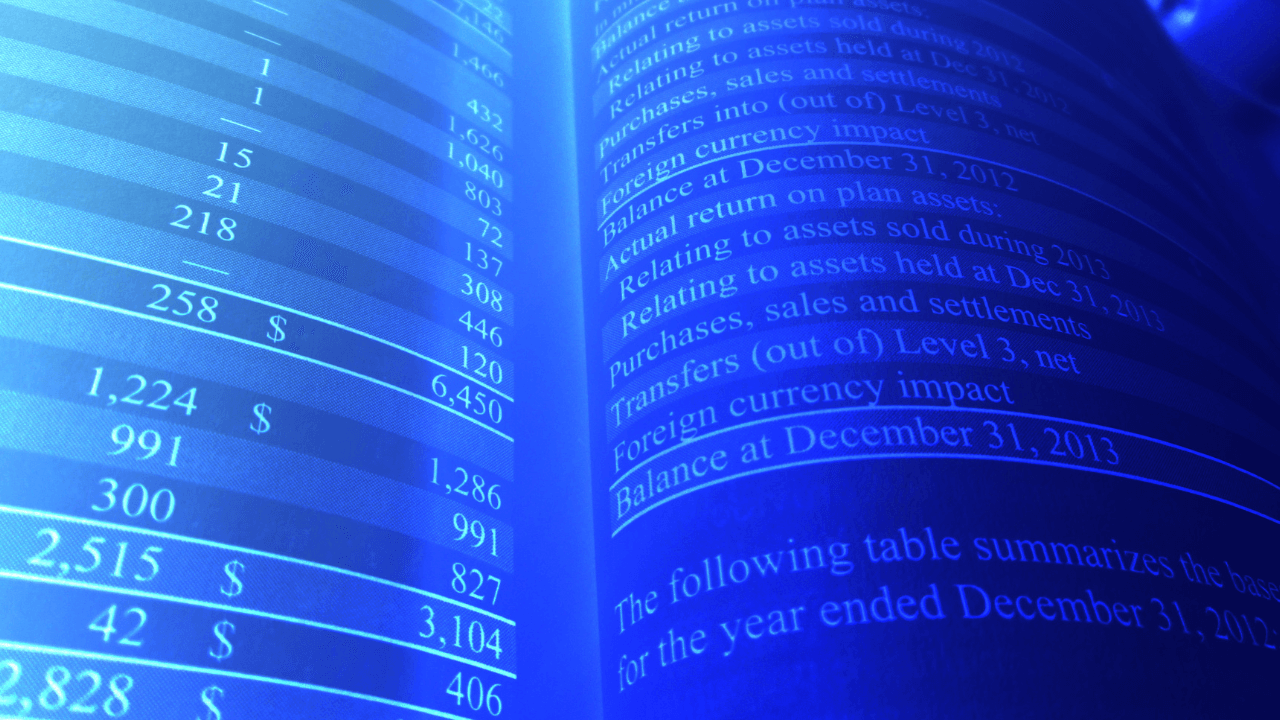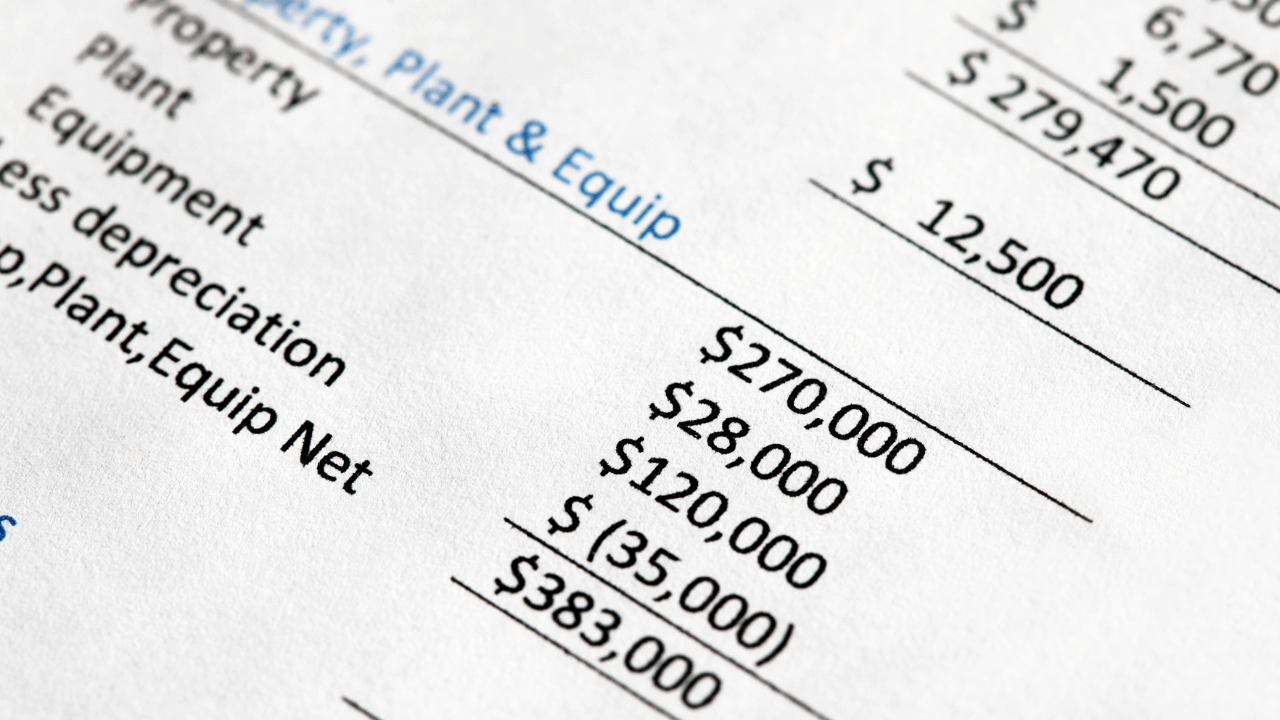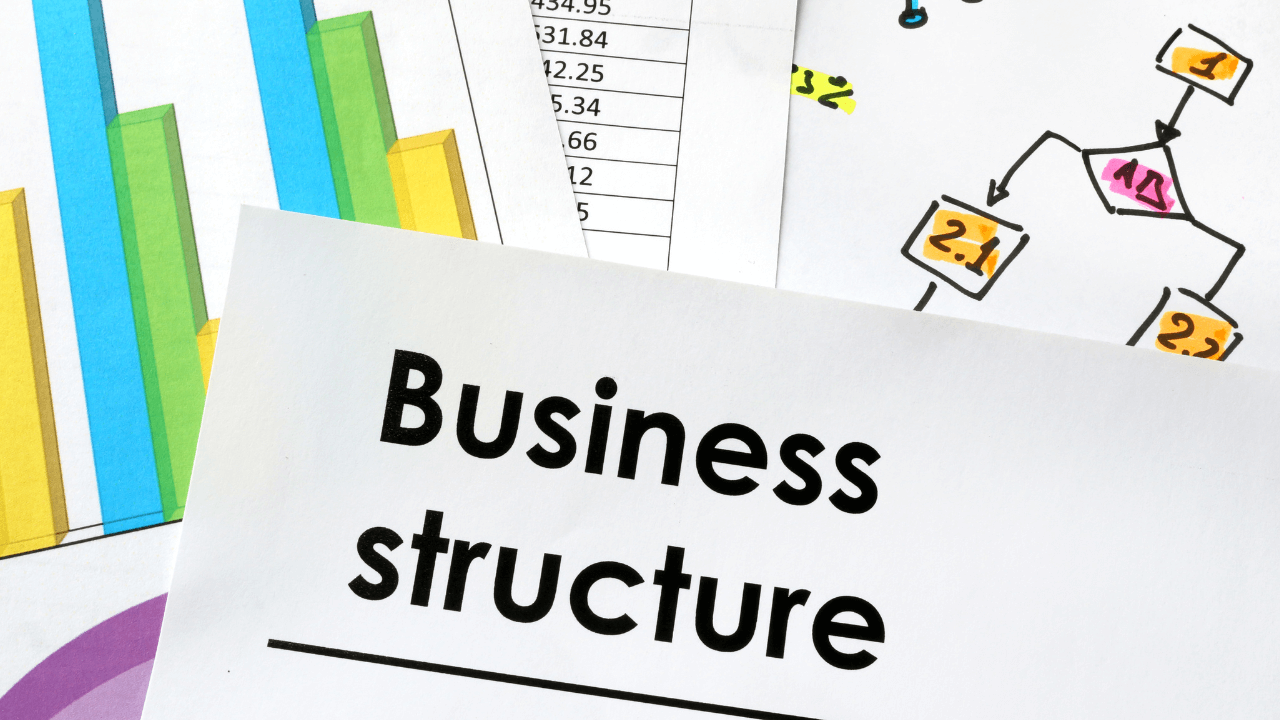Language:
Understanding a Balance Sheet: A 2024 Guide

A balance sheet is a financial statement that provides a snapshot of a company’s financial position at a given time. It is one of the most important documents for understanding a business’s financial health and stability.
However, deciphering a balance sheet can be overwhelming for those not well-versed in accounting and finance.
In this article, we will demystify the balance sheet and break down everything you need to know about it in 2024.
Let’s dive right in to say goodbye to confusion and hello to clarity!
What Is a Balance Sheet?

A balance sheet is one of three main financial reports, including income and cash flow statements. Often referred to as the financial position statement, it provides a snapshot of a company’s assets, liabilities, and shareholders’ equity at a specific time.
It is an essential tool for understanding an organization’s financial health.
The term “balance sheet” comes from the accounting formula: Assets = Liabilities + Equity!
This formula highlights the essential accounting concept that a company’s resources should be funded through either debt (liabilities) or capital from its owners (equity).
This means that all assets must be equal to the sum of liabilities and equity – hence why it is called a “balance” sheet.
Understanding the components and ratios on a balance sheet can provide valuable insights into your organization’s financial health. This helps stakeholders understand the company’s financial standing and make informed decisions about its future.
Why Is it Important?
The balance sheet presents a detailed overview of the company’s assets, liabilities, and equity, allowing stakeholders to evaluate its current and long-term financial health.
Thus, understanding and interpreting the balance sheet is vital for any business looking to thrive in today’s competitive market.
Another indicator of financial health found on the balance sheet is the debt-to-equity ratio (total liabilities divided by total equity).
A higher debt-to-equity ratio may suggest a company has taken on excessive debt, while a lower ratio may indicate a more conservative financial structure.
1. Assessing Liquidity
Another critical aspect that makes the balance sheet important is its ability to assess liquidity. Liquidity refers to a company’s ability to meet its short-term obligations using its current assets.
The balance sheet shows how much cash and cash equivalents are available for immediate use, as well as accounts receivable and inventory that can be converted into cash quickly.
The total amount of assets should always be greater than liabilities – otherwise known as having positive net worth or being solvent.
Balance sheets also offer insight into a company’s ability to meet its short-term financial obligations through its current ratio (current assets divided by current liabilities). A higher current ratio indicates better liquidity, while a lower ratio may indicate potential cash flow issues.
2. Evaluating Solvency
Solvency measures a company’s long-term ability to meet its financial obligations and remain in business.
The balance sheet includes information on long-term debts and equity, providing insights into whether or not the company has enough resources to cover its long-term liabilities.
A higher debt-to-equity ratio (total liabilities divided by total equity) may suggest a company has taken on excessive debt. In comparison, a lower ratio may indicate a more conservative financial structure.
3. Analyzing Efficiency
The balance sheet is also crucial in analyzing efficiency by comparing different components, such as accounts receivable or inventory turnover ratios, with industry benchmarks.
These ratios help measure how efficiently a company manages and generates revenue that affects profits. A higher turnover ratio indicates that the company uses its assets efficiently, which is a positive sign for investors.
What Are the Key Components of a Balance Sheet

The balance sheet must always remain balanced, with total assets equaling total liabilities plus equity. Any changes in one component will affect the other two components to maintain this balance.
Therefore, understanding the key components of a balance sheet is crucial for evaluating a company’s financial health and making informed decisions.
1. Assets
Assets represent all the company’s resources and can be used to generate revenue. The simpler explanation of business assets is that they are any tangible or intangible item that holds economic value for an organization.
There are generally two types of assets – current assets and non-current assets.
Current assets are those that can be easily converted into cash within a year, while non-current assets are those with longer-term value and cannot be easily liquidated.
One key aspect to remember about assets is their classification as either tangible or intangible. Tangible assets are physical items with monetary value, such as equipment and property.
On the other hand, intangible assets do not have a physical form but still hold economic value for a company. Examples of intangible assets include patents, copyrights, goodwill, and brand recognition.
Businesses must accurately track their asset values, as they directly affect their financial health and decision-making processes. Proper management and maintenance of these resources can lead to increased profitability and sustainable growth in the long run.
By understanding the different types and classifications of assets, businesses can make more informed decisions about their investments and operations.
2. Liabilities
Liabilities represent a company’s debts and obligations, which are the financial responsibilities a business will pay in the future. The difference between total liabilities and total assets represents the company’s net worth or equity.
If liabilities exceed assets, then there is negative equity, which raises concerns about solvency.
There are two types of liabilities: current and long-term. Current liabilities include debts that must be paid within one year, such as accounts payable, short-term loans, and accrued expenses.
On the other hand, long-term liabilities refer to debts due after more than one year, such as long-term loans, bonds payable, and deferred taxes.
3. Equity
Equity, also known as shareholder’s equity or owner’s equity, represents the ownership interest of shareholders in a company. It is computed by subtracting liabilities from assets on the balance sheet.
In simpler terms, equity is the value of a company’s assets after all debts and obligations have been paid off.
There are two types of equity: common stock and preferred stock. Common stock represents a company’s basic ownership interest and gives shareholders voting rights and potential dividends.
On the other hand, preferred stock gives shareholders preferential treatment in terms of dividends and liquidation proceeds.
Equity plays an important role in determining a company’s financial health. It reflects how much money shareholders have invested in the business.
Equity also represents the value of a company after all debts have been paid off and plays a significant role in evaluating performance, determining capital structure, and assessing risk.
Another important aspect of equity is its impact on a company’s capital structure.
While higher equity levels can provide stability for a company, they may also support growth opportunities as the company has more resources to fund its operations and growth.
How to Read and Analyze a Balance Sheet

Understanding how to read and analyze a balance sheet is crucial for investors, lenders, and business owners.
Following these steps can provide valuable insights into a business’s financial performance and help you make informed decisions about investments or lending opportunities.
1. Start with the Basics
The first step is to familiarize yourself with the layout of the balance sheet.
Typically, it consists of three main sections – assets, liabilities, and equity. Assets are listed on the left side, while liabilities and equity are on the right.
2. Understand Each Component
Once you have an overview of the layout, it’s essential to understand what each component represents.
Assets are resources owned by the company, such as cash, inventory, property, equipment, etc., while liabilities are obligations the company owes, such as loans or accounts payable.
Equity represents an ownership interest in the company.
3. Look at Ratios
Ratios help assess and compare a company’s performance with industry standards or competitors.
Some critical ratios derived from balance sheet data include liquidity ratio (current ratio), debt-to-equity ratio, and return on equity.
4. Analyze Trends
By comparing balance sheets from multiple periods, you can identify any significant changes or trends in your business’s financial position over time.
Check the notes section for additional information about specific items on the balance sheet, such as accounting policies, changes in accounting methods, and significant events that may impact the company’s financial position.
5. Consider Off-Balance-Sheet Items
Off-balance-sheet items refer to assets or liabilities that do not appear on the traditional balance sheet but still significantly impact a company’s financial position.
It can also reveal potential red flags, such as declining cash reserves, increasing debt levels, or negative equity.
These are signs that the company may be facing financial difficulties.
Common Mistakes to Avoid
Understanding and interpreting this document can be challenging for those unfamiliar with accounting terminology and principles.
So, we have compiled a list of common mistakes people make when reading or preparing this financial statement.
You can better understand your business’s financial position by avoiding these mistakes.
1. Not Differentiating Between Current and Non-Current Assets
Current assets are those expected to be converted into cash within one year or one operating cycle, while non-current assets are long-term investments that cannot be easily liquidated.
Not correctly classifying these assets can give an inaccurate picture of the company’s liquidity and affect the current ratio (current assets divided by current liabilities), which creditors use to assess a company’s short-term solvency.
2. Not Including All Liabilities
Some companies may omit certain liabilities from their balance sheet in an attempt to improve their financial performance or appear more financially stable than they actually are.
This can lead to misleading information being presented in the statement and result in incorrect decisions being made based on it.
3. Incorrectly Calculating Equity
Errors in calculating equity can misrepresent the company’s financial position.
They may also affect other metrics, such as return on equity (net income divided by shareholders’ equity), used to evaluate a company’s profitability.
Importance for Different Business Structures

The balance sheet is a crucial tool for all types of business structures, whether it is a sole proprietorship, partnership, or corporation.
Let’s delve deeper into its importance for each type of business structure.
1. Sole Proprietorship
A sole proprietorship is the simplest form of business structure in which an individual owns and operates the business alone.
The balance sheet is essential for sole proprietorships as it helps them track their personal investments in the business and how much they have earned from it.
This information is critical for tax purposes and determining the owner’s net worth.
Moreover, since there is no legal separation between the owner and the business in a sole proprietorship, the balance sheet also reflects any personal debts incurred by the owner that might affect their ability to run or invest in their business.
2. Partnership
In a partnership structure, the balance sheet provides an overview of each partner’s contributions to the company’s assets and liabilities.
Due to multiple owners’ involvement, partnerships often have more complex financial transactions than sole proprietorships, making having an up-to-date balance sheet even more critical.
It helps partners accurately track their respective shares in profits or losses and ensures transparency between all parties involved.
3. Corporation
The balance sheet accurately represents the company’s total assets and liabilities, which is crucial for investors, creditors, and other stakeholders to evaluate its financial stability and performance.
It also helps assess the company’s ability to generate profits and pay dividends to its shareholders.
4. LLC
Like corporations, LLC owners also require a balance sheet to help track their investments and assess their net worth.
The balance sheet is also essential for LLCs seeking external funding or expanding their business.
Lenders and investors often require a recent balance sheet to evaluate the company’s financial stability before committing funds.
Role of Balance Sheet in Taxes
A company’s balance sheet is important for calculating its tax liabilities.
The Internal Revenue Service (IRS) requires all businesses to file annual income tax returns based on either cash or accrual accounting methods.
The information provided in the balance sheet helps determine which method should be used and how much taxes are owed.
One way the balance sheet affects taxes is through its impact on depreciation expenses. Depreciation is an accounting method used to spread out the cost of an asset over its useful life rather than deducting it all at once from profits.
A company’s balance sheet lists assets listed as current or fixed assets, and each category has different depreciation rules.
Current assets, such as inventory or accounts receivable, are not depreciable since they are expected to be converted into cash relatively quickly.
On the other hand, fixed assets like buildings and equipment can be depreciated over time, reducing taxable income and lowering tax liability.
Another aspect where balance sheets play an integral role in taxes is debt financing. When companies take out loans or issue bonds, they record these liabilities on their balance sheets.
Interest paid on these debts is deductible from taxable income, reducing the business’s tax liability.
Furthermore, equity financing also has implications for taxes as any dividends paid to shareholders are not considered tax-deductible expenses but rather distributions of after-tax profits.
Therefore, companies may reinvest earnings instead of dividends to decrease their taxable income.
The balance sheet also helps determine whether a business qualifies for certain tax deductions and business lines of credit based on its financial position.
For instance, businesses with a lower debt-to-equity ratio may be eligible for tax deductions on interest expenses.
At the same time, companies with high levels of research and development (R&D) may qualify for R&D tax credits.
Streamline Your Tax Management With doola

The balance sheet is a tool for evaluating a company’s financial health and has significant tax implications.
However, maintaining accurate and up-to-date balance sheets to effectively manage tax obligations is difficult.
Luckily, you can automate these mundane tasks and ensure more accurate and reliable balance sheet figures with doola!
We provide a one-stop solution for all your business and tax management needs, regardless of your business structure.
We will be with you every step of the way, from choosing the right business structure to deciding the right location for incorporation, filing taxes and management documentation, and much more.
Get started with Total Compliance for tax consultation and ongoing regulatory compliance.
This package surpasses a hired tax expert’s service portfolio by unlocking seamless tax management with end-to-end automation.
For more information, book a free consultation call with our experts today!
Keep reading
Start your dream business and keep it 100% compliant
Turn your dream idea into your dream business.













